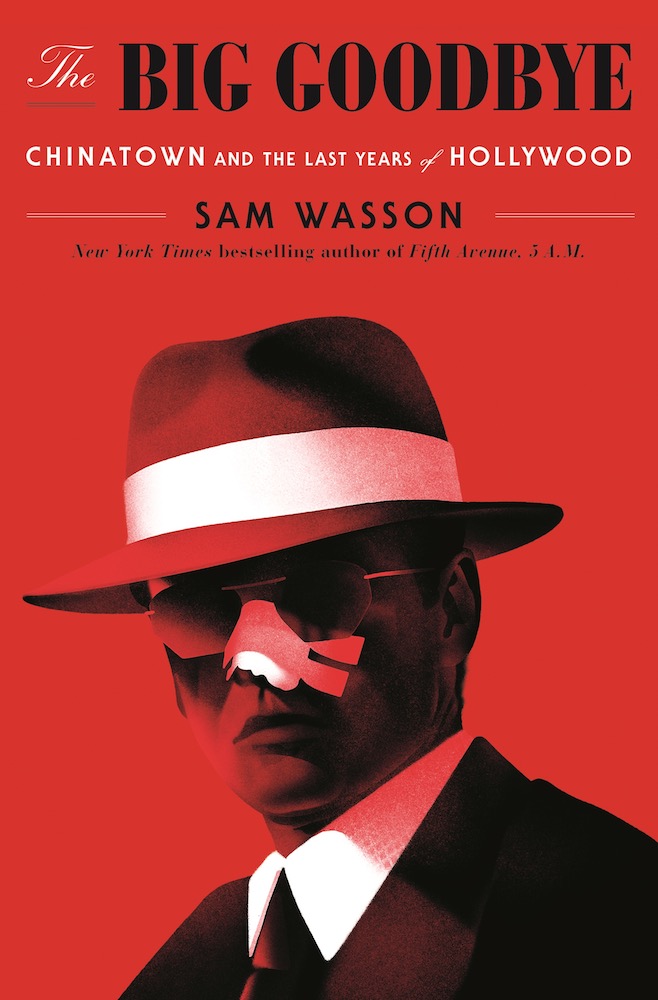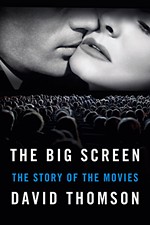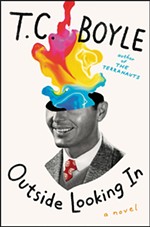Book Review: The Big Goodbye
The making of Chinatown gets its full due in Wasson's chronicle
By David Gaines, 12:05PM, Tue. Feb. 25, 2020
Chinatown – the 1974 cinematic collaboration of director Roman Polanski, producer Robert Evans, screenwriter Robert Towne, and leading man Jack Nicholson – is back and then some.
Rumors of a Netflix Chinatown prequel project headed by director David Fincher and Towne, shout-outs from Ed Norton about it being the inspiration for his Motherless Brooklyn, an occasional New Yorker cartoon alluding to the closing scene, and a New York Times op-ed piece from Maureen Dowd linking the Age of Trump to the dark world of Chinatown are but a few pieces of evidence strewn across our current landscape. In short, for a slice of America’s movie-loving public, it’s a story that keeps on keeping on.

Enter Sam Wasson’s The Big Goodbye, which takes the story of the movie’s making and significance to the next level. It is a feast for those of us who consider Chinatown one of the great works of (the first) New Hollywood. It might even pull in new viewers who have somehow missed out on this classic about pre-World War Two Los Angeles, water, power, and good intentions from “back in the day.” Wasson, a New York Times reporter who has written books about Bob Fosse, Audrey Hepburn, Paul Mazursky, and Blake Edwards, is a bit of, in the words of Nicholson’s private investigator J.J. Gittes, “a snoop” who tracked down the tales of not only the men who got the credit for making Chinatown but also several women who contributed significantly, some key secondary characters, and even a mysterious figure named Edward Taylor who may deserve as much credit for the screenplay as the heretofore touted “genius” Robert Towne. What becomes clear as Wasson lays out his case is that the story of Chinatown's making is almost as amazingly convoluted as the movie itself.
Wasson clearly subscribes to the late New Yorker film critic Pauline Kael’s claim that “[e]xtraordinary movies are the result of the ‘right’ people’s getting together on the ‘right’ project at the ‘right’ time – in their lives and in history.” (Kael wrote this in her classic Raising Kane, a work – like Wasson’s fellow New York Times journalist Aljean Harmetz’s separate volumes on Casablanca, Gone With the Wind, and The Wizard of Oz; and the late Don Graham’s treatment of Giant – that dives as deeply as possible into the whole equation of a movie for a popular audience. Think steady doses of characters in richly described scenes with small dollops of translated film discourse). What distinguishes Chinatown from these earlier movies is that, according to Wasson, 1974 marked not only the end of a particular romantic strain of the New Hollywood but also the coming to terms with a post-Manson, post-Vietnam, post-Watergate Los Angeles and America. That unraveling of the outside world coupled with the Hollywood pyrotechnics of Evans, Towne, Polanski, and Nicholson drives The Big Goodbye’s 331 rapidly-turned pages. (Think Vanity Fair excerpt in this year’s Hollywood issue.)
Without spoiling too much of the plot, it does become increasingly clear that the making of and credit for Chinatown “belongs to” different people at different points in time. Or, as the kid tells Gittes early in the movie when asked about the diverted water at the heart of the matter: “Comes in different parts of the river – every night a different part.” Polanski is depicted as a genius who brings order to the project (and as a grief-stricken, self-destructive character when not behind the camera). Nicholson is the social chairman who keeps people talking to each other. Evans is a romantic from another era who succumbs to cocaine. Towne comes off least favorably for a variety of suggested cruelties. Sharon Tate, Polanski’s murdered wife, and Charles Manson float above and weave through the story, as do reporters turned studio heads and costume designers with happy marriages. Iconic director John Huston, who plays the villain, is trouble on the set. And his daughter, Angelica, who happens to be Nicholson’s lover at the time, joins female lead Faye Dunaway in the gallery of poorly treated women. The story of Jerry Goldsmith coming in and saving the musical score in 48 hours is the stuff of legend and central to Chinatown’s mood.
Wasson occasionally overwrites. Take for example, “Love like the ground, like the past, can be dug up, put aside, but never removed. Bring in the shovels, the Caterpillar D9s, the analysts, the exorcists, the art – they can all only move the dirt. In piles beside the ditch, it will wait to be moved again.” Such misdemeanors are crimes of passion, as well as matters of taste. After all, he enthusiastically compares Chinatown to The Great Gatsby and Moby-Dick. And I, for one, by end of The Big Goodbye, was not only convinced but also entertained.
The Big Goodbye
by Sam WassonFlatiron Books, 416 pp., $28.99
A note to readers: Bold and uncensored, The Austin Chronicle has been Austin’s independent news source for over 40 years, expressing the community’s political and environmental concerns and supporting its active cultural scene. Now more than ever, we need your support to continue supplying Austin with independent, free press. If real news is important to you, please consider making a donation of $5, $10 or whatever you can afford, to help keep our journalism on stands.
Kimberley Jones, Nov. 23, 2012
April 12, 2019
Dec. 12, 2016
film books, nonfiction books, Chinatown, Roman Polanski, Robert Evans, Robert Towne, Jack Nicholson, Sam Wasson








